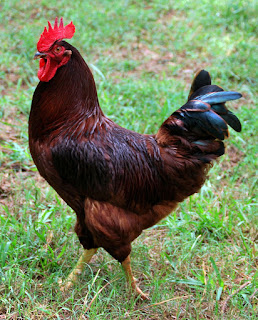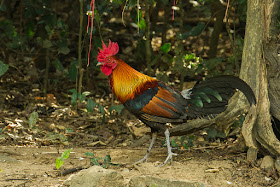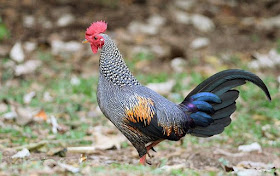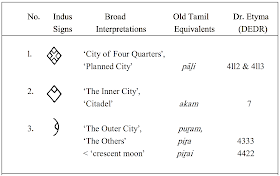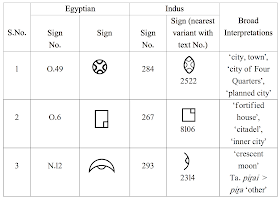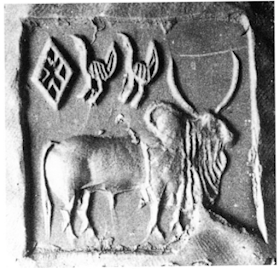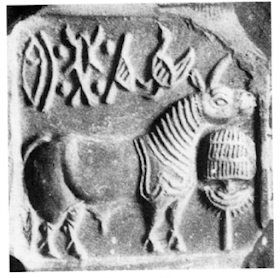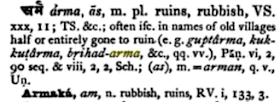Hi Everyone!
I came across the link below and was happy, actually thrilled to see that it explains what I have added and tried to explain in my book Maya’s Quest, which is based on life in the ancient Sindhu (Indus) Valley, which I hope to bring to you sometime next year.
https://oldeuropeanculture.blogspot.com/2018/05/the-city-of-cockerels.html?m=1&fbclid=IwAR3_IE2Lh0uxdg-hJnwhYXpU6laCJqqRfMdBqOvjYUqHWrHaWIcOJIz-XME
If you are an aficionado of science fiction interspersed with history, then I am sure Maya’s Quest will pique your interest and you will be waiting to read the beginning of the SIndhu Valley Saga. Keep your eyes on this page. I will be posting snippets occasionally; till such time you can start reading the whole story.
A quick snippet: The Sindhu Valley was given the name “Indus” by Alexander the Great who came to the are long after the civilization was no more, therefore given the timeline, I will call the area city of Kukkutarma of the Sindhu Valley.
He based his identification on the fact that identical symbols are known from Ancient Egypt:
This does open the question about the cultural connection between these two ancient civilizations. But this is not why I am mentioning this article.
Another thing that Iravatham Mahadevan discusses in his article is the original name of Mohenjo Daro.
Many seals with cock symbols were discovered in Mohenjo Daro. Here are just two of these seals:
Because of the repeated occurrence of cocks in the seals, it is fair to assume that cocks played an important role in the city and its culture.
Now in Sanskrit the word for “Cock, Cockerel” is कुक्कुट (kukkuTa)
Why is this important? Because of this:
Thomas Burrow, who was an Indologist at the University of Oxford, published various books and papers in the field of linguistics and Indology. In his paper “On the significance of the term arma-, armaka- in Early Sanskrit Literature”, published in Journal of Indian History XLI, Pt. I (1963) : 159-166, he published the list of all the places found in Sanskrit literature which end with “arma”, “armaka”. As we can see in “A Sanskrit-English dictionary, etymologically and philologically arranged, with special reference to Greek, Latin, Gothic, German, Anglo-Saxon, and other cognate Indo-European languages” published by Monier-Williams, Monier, Sir, 1819-1899 we can see that the Sanskrit words “arma”, “armaka” mean “ruins of a village, town”:
Thomas Burrow postulated that the place names ending with “arma”, “armaka” are the names of ancient cities which were destroyed either by advancing Arians or were already lying in ruins when the Arians arrived.
It is safe to assume that most of the ruined cities mention in ancient Sanskrit literature must have belonged to the Indus Valley Civilization – because at the time of writing these ancient texts, most of the Indus Valley Cities must have been in a ruined state – and also at the time of writing these texts there were no Vedic cities in such ruined state.
One of the cities mentioned in the list of ruined cities composed by Thomas Burrow is “Kukkutarmaka”. And as we have seen “kukkuTa” in the Sanskrit means “Cock, Cockerel”. This means that “Kukkutarmaka” mentioned in the list means “ruined city of cocks, cockerels”.
Based on all this, Iravatham Mahadevan concluded that the name of Mohenjo Daro, during the Indus Valley Civilization times, was probably “Kukkut arma” i.e. “City of cocks, cockerels”.
Now considering that Mohenjo Daro, Kukkut arma, was built around 2500 BC, it is most likely that the people who built The City of Cocks have by that time already domesticated chickens???
Anyway, Iravatham Mahadevan also concludes that the city name, Kukkut arma, proves that people who built Mohenjo Daro spoke Dravidian languages. This he says is because in today Dravidian languages like Naiki (Chanda) and Gondi the word for cockerel is gogodi, phonemically *kokoṭi, *kōkōṭi, *kukōṭi, *kokVṭi and finally *kokoṭ. You can find these words in “Pleonastic Compounding: An Ancient Dravidian Word Structure” by Periannan Chandrasekharan.
The word traveled east with the chickens. In Slavic languages, one of the words for cockerel is “Kokot” which comes from Proto-Slavic “*kokotъ” and is identical to Dravidian and Sanskrit words for cockerel. This word comes from the languages of the R1a people who dominated the Eurasian steppe during the Bronze Age, when the chickens started spreading from India towards Europe. Considering that these people controlled the main land trade route through Eurasia, connecting China, India, Europe, they probably were the people who brought chickens into Europe from India. These R1a people are one of the direct ancestors of the Slavs, so no wonder that we find the same name for cockerel in Slavic, Sanskrit and Dravidian languages.Chickens finally appear in Europe in the 9th century BC when the words for chicken start appearing in other European languages.
